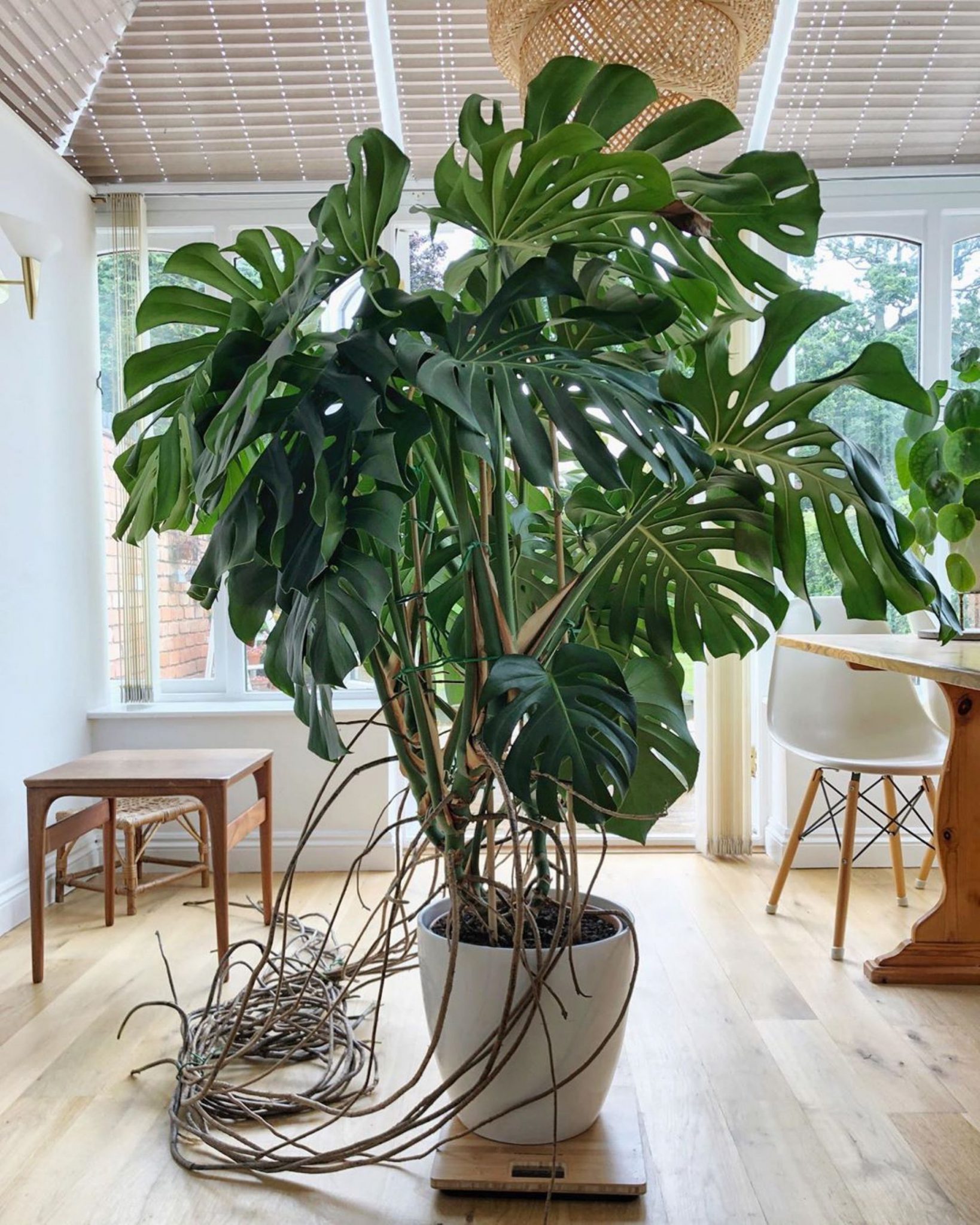
Source homesfornh.com
Monstera Deliciosa Care Guide
Welcome to our comprehensive guide on monstera deliciosa care. Monstera deliciosa, also known as the Swiss cheese plant, is a popular choice among plant lovers due to its stunning foliage and low maintenance requirements. In this article, we will delve into the essential aspects of caring for this tropical beauty, from providing the ideal growing conditions to addressing common issues that may arise. Whether you are a beginner or an experienced plant parent, this guide will equip you with the knowledge to help your monstera thrive.
Choosing the Right Location
Indoor Placement
When it comes to indoor placement for your monstera deliciosa, it is important to consider its natural habitat. Monstera plants are native to the tropical rainforests of Central America, where they thrive in bright, indirect sunlight. Therefore, find a spot that provides ample bright but filtered light, such as near a north or east-facing window. Direct sunlight can scorch the leaves, while insufficient light may result in stunted growth.
Outdoor Placement
If you want to grow your monstera deliciosa outdoors, ensure you live in a suitable climate. These plants thrive in USDA hardiness zones 10 to 12, where temperatures remain above 55°F (12°C) year-round. Choose a location with partial shade, as excessive exposure to direct sunlight can lead to leaf burn.
Proper Watering Techniques
Watering Frequency
Monstera deliciosa plants appreciate consistent but not overly frequent watering. Allow the top inch (2.5 cm) of soil to dry out before watering again. Overwatering can lead to root rot, while underwatering can cause the leaves to wilt and yellow. Aim for the middle ground by keeping the soil evenly moist, but not soggy.
Watering Techniques
When watering your monstera deliciosa, thoroughly saturate the soil until water seeps out of the drainage holes. Discard any excess water that collects in the saucer to avoid waterlogging. Consider using filtered or distilled water, as monstera plants are sensitive to the chemicals present in tap water.
Providing Optimal Humidity
Creating a Humid Environment
Monstera deliciosa plants thrive in environments with high humidity levels, mimicking their natural habitat. To raise the humidity around your plant, you can employ various methods. Grouping plants together, using a humidifier, or placing a tray filled with water near the monstera are effective ways to increase moisture in the air. Misting the leaves can also provide temporary relief, but avoid misting excessively as it may encourage fungal diseases.
Avoiding Excessive Dryness
Central heating and air conditioning can cause the air to become too dry for monstera deliciosa plants. Consider using a humidifier during the winter months or placing your plant away from sources of artificial heat or cold drafts. Brown leaf tips indicate that the air is excessively dry, and adjusting the humidity levels can help prevent further damage.
Table: Monstera Deliciosa Care Cheat Sheet
| Aspect of Care | Details |
|---|---|
| Lighting | Bright, indirect light |
| Temperature | Between 64°F (18°C) and 85°F (29°C) |
| Watering | Allow top inch of soil to dry out before watering |
| Humidity | High humidity levels, around 60-70% |
| Fertilization | Monthly during growing season with balanced liquid fertilizer |
| Pruning | Remove damaged or yellowing leaves, and trim vines if desired |
| Propagation | Stem cuttings or air layering |
| Pests | Common pests include mealybugs, spider mites, and scale insects |
FAQs about Monstera Deliciosa Care
1. How often should I fertilize my monstera deliciosa?
During the active growing season, feed your monstera deliciosa with a balanced liquid fertilizer once a month. Dilute the fertilizer according to the manufacturer’s instructions to prevent overfertilization, which can lead to burned roots.
2. What should I do if my monstera deliciosa’s leaves turn brown?
Brown leaf tips are typically a sign of low humidity or improper watering. Increase the humidity around your plant by using a humidifier or employing other methods mentioned earlier. Additionally, ensure you are watering your plant consistently but not excessively and adjust accordingly.
3. Can I place my monstera deliciosa in direct sunlight?
While monstera deliciosa plants prefer bright, indirect light, they can tolerate some exposure to direct sunlight. However, intense direct sunlight for prolonged periods can scorch the leaves. It’s best to provide filtered or partially shaded light to prevent leaf burn.
4. Should I trim the vines of my monstera deliciosa?
Trimming the vines of your monstera deliciosa is not necessary but can be done to control the plant’s size or shape. Pruning also helps to remove any yellowing or damaged leaves. Use clean, sharp pruning shears to make clean cuts just above a leaf node.
5. Is monstera deliciosa toxic to pets?
Yes, monstera deliciosa is toxic to dogs and cats if ingested. The plant contains insoluble calcium oxalate crystals, which can cause irritation and discomfort when consumed. It is advisable to keep your pets away from the plant or place it out of their reach.
Conclusion
In conclusion, monstera deliciosa care involves providing the right lighting, proper watering techniques, adequate humidity levels, and regular maintenance. By adhering to these guidelines and understanding the needs of your plant, you can help it flourish and showcase its magnificent foliage. Remember to develop a routine that works best for your monstera and adjust accordingly as it grows. Enjoy the journey of nurturing and growing this tropical beauty!